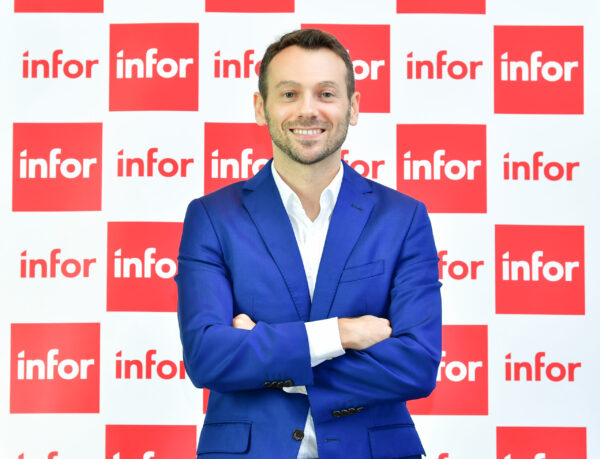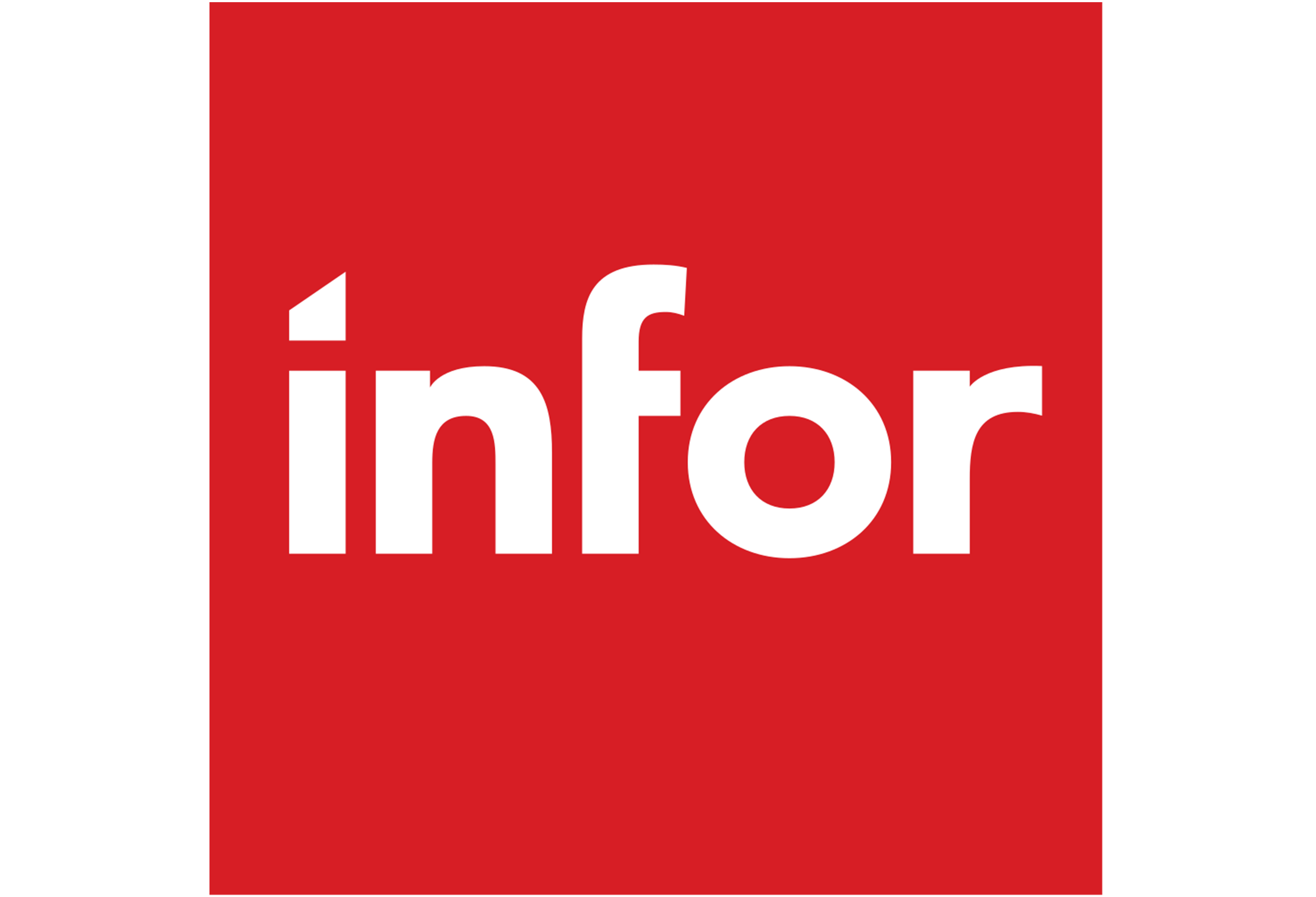
บทความโดย นายฟาบิโอ ทิวิติ
รองประธานบริษัท อินฟอร์ อาเชียน
อุตสาหกรรมด้านอาหารและเครื่องดื่มต่างต้องต่อกรกับความต้องการที่ไม่เหมือนใครมาอย่างยาวนาน เช่น การที่ต้องบริหารจัดการกับอายุสินค้า ความซับซ้อนในการจัดตารางการผลิตรุ่นต่าง ๆ การตรวจสอบย้อนกลับ และปัจจัยอื่น ๆ อีกมาก นอกจากนี้ ความไม่แน่นอนด้านภาษี แนวคิดเรื่องการทำธุรกิจอย่างยั่งยืน และกฎระเบียบที่เพิ่มขึ้น ซึ่งมีการเปลี่ยนแปลงอยู่ตลอดเวลา ล้วนเป็นปัจจัยที่ก่อให้เกิดความซับซ้อนมากขึ้น ปัญหาและแนวโน้มนานัปการเหล่านี้จะส่งผลกระทบอย่างมากต่อระบบซัพพลายเชนที่บริษัทใช้อยู่ ไม่ว่าจะเป็นกระบวนการจัดหา การผลิต จนถึงการจัดส่ง
เชื่อมต่อกับตลาดโลก
เรามักจำกัดตัวเราและให้ความสำคัญกับสิ่งที่สามารถควบคุมได้ อย่างไรก็ตาม ถึงเวลาแล้วที่เราควรพิจารณากระบวนการด้านซัพพลายเชนที่บริษัทใช้อยู่เสียใหม่ เพราะมันอาจไม่มีประสิทธิภาพเท่าที่ควรจะเป็น สองปีที่ผ่านมา อินฟอร์ได้สำรวจบริษัทที่อยู่ในเครือข่ายซัพพลายเชนทั่วโลกบนแพลตฟอร์ม Infor Nexus และพบว่าประมาณ 46% ของผู้ตอบแบบสำรวจระบุว่าพวกเขาใช้เวลานานถึงสามวันเพื่อมองหาว่ามีผลิตภัณฑ์ที่ต้องการอยู่ที่ใดบ้าง และจะมีพร้อมวางตลาดเมื่อใด นั่นแสดงให้เห็นได้ชัดว่ายังไม่มีข้อมูลที่ทำให้บริษัทเหล่านั้น สามารถตัดสินใจได้อย่างสมเหตุสมผลในทันที นอกจากนี้ ยังมีช่องว่างเกี่ยวกับวิธีการที่ผู้ผลิตใช้ติดต่อกับลูกค้า ซัพพลายเออร์ และผู้ให้บริการภายนอกองค์กร เช่นการเชื่อมต่อแบบ point-to-point ที่หลากหลายผ่านการเชื่อมต่อผ่านเครื่องคอมพิวเตอร์ที่มีมาตรฐานเป็นที่ยอมรับร่วมกัน (Electronic Data Interchange: EDI), พอร์ทัลที่ใช้ หรือสเปรดชีต หรืออีเมล และยังมีช่องทางการเชื่อมต่ออีกมากที่เหมือนจะไม่มีจุดสิ้นสุด และดูแลให้มีประสิทธิภาพได้ยาก
บริษัทต่าง ๆ จึงจำเป็นจะต้องเชื่อมต่อกับคู่ค้าทั่วโลกด้วยวิธีที่เหมาะสมและมีประสิทธิภาพ เพื่อให้เป็นที่รู้จัก การใช้แพลตฟอร์มเครือข่ายธุรกิจที่เชื่อมต่อกับองค์กรได้หลากหลายองค์กร จะช่วยให้บริษัทของคุณสามารถขจัดการทำงานแบบไซโล ซึ่งเกิดขึ้นไม่เพียงแต่ภายในองค์กรเท่านั้น แต่ระหว่างองค์กรของคุณกับผู้คนที่คุณทำธุรกิจด้วยเช่นกัน แพลตฟอร์มลักษณะนี้จะช่วยให้คุณสามารถรวบรวมและแบ่งปันข้อมูลแบบเรียลไทม์ เพื่อเพิ่มประสิทธิภาพและการตอบสนองทางธุรกิจโดยรวม
สามารถคาดการณ์และรับมือกับความผันผวนที่อาจเกิดขึ้น
การคาดการณ์และการตอบสนองต่อความผันผวน สามารถเริ่มได้จากเรื่องของประสิทธิภาพพื้นฐานและระบบอัตโนมัติในโรงงาน คุณต้องตอบคำถามว่า คุณจะเพิ่มประสิทธิภาพให้กับตารางการผลิตอย่างไร คุณจะจัดการกับปัญหาคอขวดต่าง ๆ เพื่อทำงานได้ดีขึ้นอย่างไร ทั้งงานที่อยู่ในกระบวนการดำเนินงานทั่วไป หรือความรวดเร็วของกระบวนการต่าง ๆ ภายในสายงานบรรจุของบริษัทฯ
เครื่องมือที่จะเข้ามาช่วยในการจัดตารางการทำงานต่าง ๆ ที่ให้ความสำคัญกับตัวแปรทั้งหมด เพื่อเพิ่มประสิทธิภาพให้กับการผลิตเป็นเพียงคำตอบส่วนหนึ่งเท่านั้น แต่เมื่อคุณนำโซลูชั่นด้านการจัดการสินทรัพย์ที่คุณมีอยู่มาใช้ร่วมกับโซลูชั่นในการจัดตารางเวลา คุณจะเข้าใจได้มากขึ้นว่า จะวางแผนการบำรุงรักษาอย่างไร เพราะคุณจะเห็นภาพที่ชัดเจนว่า อุปกรณ์ใดต้องการการบำรุงรักษาแบบใด โซลูชั่นด้านการจัดตารางการผลิตและการบริหารจัดการสินทรัพย์ มีผลต่อระบบซัพพลายเชนและความสามารถในการส่งมอบของผลิตภัณฑ์ของบริษัท และควรเป็นโซลูชั่นที่รวมอยู่ด้วยกันไม่ใช่เป็นระบบที่แยกกันบริหารจัดการ
เมื่อพูดถึงเรื่องของประสิทธิภาพและระบบอัตโนมัติ ยังมีความท้าทายในการเพิ่มประสิทธิภาพให้กับการขนส่งและการจัดการคลังสินค้าขององค์กร และความเข้าใจเรื่องของความซับซ้อนในการทำงานเหล่านี้ ซึ่งใช้เป็นช่องทางในการพัฒนาตลาด และสมรรถนะ ความต้องการบางอย่างเปลี่ยนไปไม่ว่าบริษัทของคุณจะทำอีคอมเมิร์ซเอง หรือทำงานร่วมกับบริษัทด้านอีคอมเมิร์ซอื่นๆ ในการส่งมอบผลิตภัณฑ์ให้กับลูกค้า บริษัทหลายแห่งกำลังมองหา เครื่องมือที่สามารถช่วยให้ทำงานได้อย่างมีประสิทธิภาพมากขึ้น
การปรับปรุงประสิทธิภาพเป็นตัวขับเคลื่อนในอุตสาหกรรมอาหารมานานหลายทศวรรษ แต่สิ่งที่มีความผันผวนมากที่สุดคือ แนวคิดเรื่องความยั่งยืนและความโปร่งใส สิ่งที่ผู้บริโภคกำลังมองหาส่งผลให้เกิดการเปลี่ยนแปลงความต้องการของตลาดอย่างต่อเนื่อง เดิมทีฉลากผลิตภัณฑ์จะระบุเพียงเช่นปราศจากไขมัน หรือไม่ได้เป็นผลิตภัณฑ์ที่ผ่านการตัดต่อพันธุกรรมหรืออื่น ๆ ที่คล้ายกัน แต่ในช่วงไม่กี่ปีที่ผ่านมา ฉลากผลิตภัณฑ์จะต้องระบุให้ชัดเจนยิ่งขึ้น เพราะผู้บริโภคต้องการที่จะรู้ถึงส่วนผสมของผลิตภัณฑ์นั้น ๆ และตอนนี้ แนวโน้มนี้ก็กำลังขยายตัวเพิ่มขึ้นเรื่อย ๆ สำหรับเรื่องความยั่งยืนในวันนี้อาจรวมถึงสุขลักษณะของฟาร์ม ความยั่งยืนของวัตถุดิบที่ใช้ การใช้พลังงาน การลดการใช้พลาสติก และการใช้บรรจุภัณฑ์ให้น้อยที่สุด อินฟอร์มีลูกค้าหลายรายที่ให้ความสำคัญกับการตรวจวัดและรายงานเรื่องความยั่งยืน หนึ่งในนั้นคือการตั้งคำถามพื้นฐานด้านการเลี้ยงดูประชากรโลกที่กำลังเพิ่มขึ้นด้วยแนวทางที่ยั่งยืน ซึ่งส่วนหนึ่งที่จะช่วยได้ก็ด้วยการนำเสนอโซลูชั่นระดับโลกมาช่วยให้พวกเขาได้ใช้เพื่อให้ระบบซัพพลายเชนมีประสิทธิภาพมากขึ้น
บริษัทแต่ละแห่งอาจมีวัตถุประสงค์และความต้องการที่แตกต่างกัน รวมทั้งมีวิธีการของตนเองในการแก้ไขปัญหาเรื่องความยั่งยืน สำหรับบางบริษัทอาจหมายถึงการมีระบบที่ดีขึ้นในการติดตามและสืบค้นย้อนกลับไปยังวัตถุดิบในการผลิต สำหรับบริษัทอื่น ๆ อาจจะหมายถึงการมีระบบที่ดีขึ้นในการวัดปริมาณการปล่อยก๊าซคาร์บอนไดออกไซด์ หรือการจัดการน้ำเสีย ดังนั้น ความท้าทายของบริษัทต่าง ๆ อยู่ที่การกำหนดสิ่งที่พวกเขาต้องการตรวจวัด สิ่งที่ต้องการติดตามสืบค้นย้อนกลับ และในทางกลับกันก็ต้องมีเครื่องมือที่สามารถทำแบบนั้นได้เช่นกัน
ส่วนความผันผวนสุดท้ายที่พบเป็นเรื่องใหม่ ๆ ที่เราอาจไม่เคยทราบมาก่อน บริษัทผลิตอาหารและเครื่องดื่มต่างคุ้นเคยกับการวางแผนตามช่วงเทศกาล อายุของสินค้า และการส่งเสริมการขาย แต่เมื่อไม่นานมานี้ เราต้องรับมือกับความท้าทายที่เพิ่มขึ้นในด้านกฎระเบียบและพิกัดอัตราภาษีศุลกากรที่ไม่สามารถคาดการณ์ได้ ซึ่งรวมถึงเรื่องกำลังคนทำงานก็สำคัญเช่นกัน
บริษัทด้านอาหารและเครื่องดื่มจะตอบสนองความต้องการของตลาดได้อย่างไร หากบริษัทไม่สามารถหาคนมาทำงานในโรงงานได้ ดังนั้น เพื่อให้สามารถพิจารณาตัวแปรทั้งหมดได้อย่างถี่ถ้วนรอบด้าน บริษัทต่าง ๆ ต้องอาศัยเครื่องมือวางแผนขั้นสูงที่ค่อนข้างฉลาด บริษัทไม่อาจคาดเดาอะไรที่ถูกต้องและดีที่สุดได้เลยจากเครื่องมือธรรมดาที่มีอยู่ การเลือกใช้เทคโนโลยีที่ครบวงจร มีประสิทธิภาพ เป็นที่ยอมรับ และได้รับความไว้วางใจจากทั่วโลกจึงเป็นสิ่งสำคัญที่บริษัทด้านอาหารและเครื่องดื่มต้องพิจารณา
